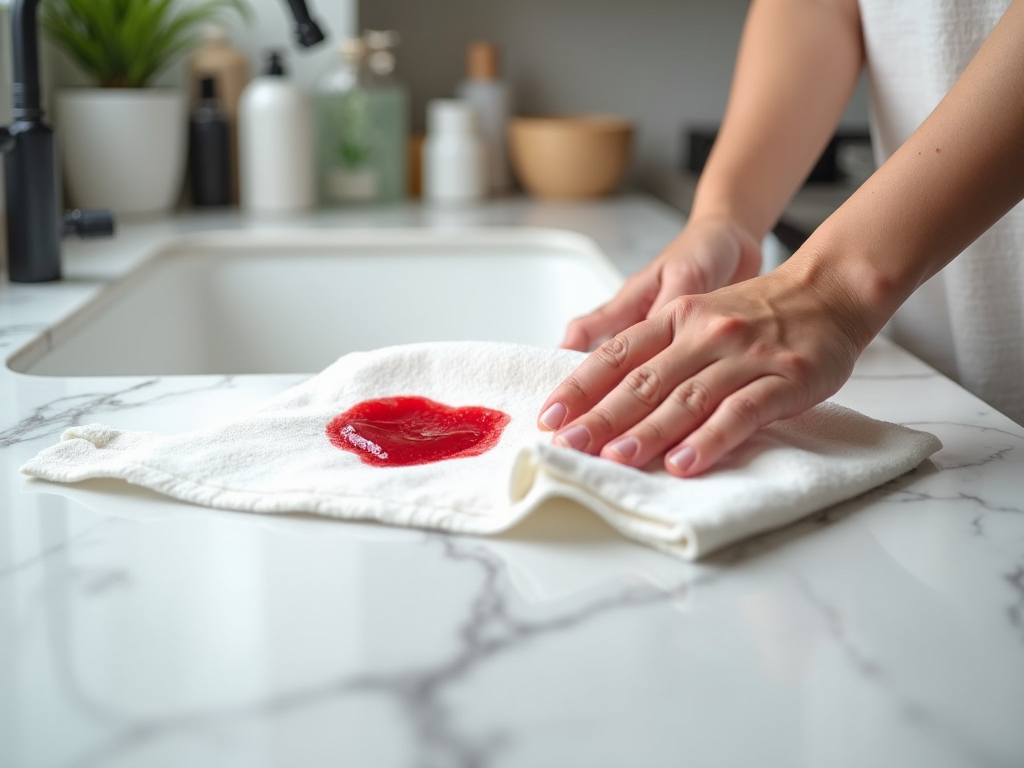Blood stains can be a daunting and irritating issue to tackle, but worry not—there are effective methods to eliminate these pesky blemishes from your fabrics with ease. This article will walk you through tried-and-tested strategies to efficiently remove blood stains, ensuring your clothes and linens stay fresh and spotless. With the right techniques and a bit of patience, you can conquer even the most stubborn blood stains and restore your fabrics to their original condition.
Understanding the Importance of Acting Quickly

When it comes to removing blood stains, timing is everything. Fresh stains are much easier to remove than old, set-in ones. As soon as you notice a blood stain, it’s crucial to act quickly to prevent it from setting into the fabric. Begin by rinsing the fabric under cold running water to remove as much of the blood as possible. Cold water is ideal because it helps prevent the stain from embedding further into the fabric, unlike warm or hot water which can encourage it to set.
Choosing the Right Cleaning Agents

The key to successfully removing blood stains often lies in choosing the right cleaning agent. Commercial stain removers are specifically formulated to tackle tough stains and can be highly effective. However, many household items can also work wonders in treating blood stains. Opt for household items like hydrogen peroxide, baking soda, or white vinegar, which are gentle yet effective. Hydrogen peroxide is particularly favored for its ability to break down blood proteins, making it a reliable option for tackling stains.
Step-by-Step Guide to Removing Blood Stains
Removing blood stains can be accomplished through the following steps:
- Act immediately: Use cold water to rinse the stain thoroughly.
- Blot, don’t rub: Use a clean cloth to blot the stain gently.
- Apply a stain remover: Choose a commercial product or a homemade solution.
- Let it sit: Allow the cleaning agent to penetrate the fabric for several minutes.
- Wash as usual: Follow the fabric care instructions and wash the item.
Following these steps will maximize your chances of removing the stain effectively. Remember to always test any cleaning solution on a hidden area first to ensure it does not cause discoloration or damage.
Dealing with Stubborn and Dried Blood Stains
If a blood stain has already dried, it requires a more robust approach. First, you should soak the fabric in cold water for several hours to loosen the stain. Next, apply a mixture of baking soda and water, forming a paste, onto the stain and let it sit for at least 30 minutes. Gently scrub the affected area with a soft brush or cloth, then rinse thoroughly. If needed, repeat the process or try using a commercial enzyme cleaner to further break down the stain.
Tips for Delicate Fabrics
Handling blood stains on delicate fabrics like silk or wool requires extra care to prevent damage. Consider consulting a professional cleaner for expensive or particularly fragile items, but for at-home solutions, use gentle, non-abrasive methods. Cold water rinse and mild soap, or diluted vinegar can be good alternatives. Always avoid over-saturating the fabric and dab (rather than rub) the stained area to avoid stretching or tearing the fibers.
Conclusion
Blood stains do not have to leave a permanent mark on your favorite fabrics. By acting quickly and following the right steps, you can remove these stains effectively. With a proper understanding of what cleaning agents to use and how to apply them, tackling even the most stubborn blood stains becomes a manageable task. From using common household items to understanding the specifics of dealing with delicate fabrics, you now have a comprehensive toolkit to ensure your clothes and linens remain pristine.
Frequently Asked Questions
1. Can I use hot water to remove blood stains?
No, using hot water is not recommended for fresh blood stains as it can cause the stain to set further into the fabric.
2. Is hydrogen peroxide safe for all fabrics?
While hydrogen peroxide is effective, it can cause discoloration on some fabrics. Always test it on a hidden area first.
3. What if the blood stain persists after washing?
If the stain remains after washing, you may need to treat it again with a stain remover or consult a professional cleaner.
4. How long should I leave a homemade cleaning solution on the stain?
Let homemade solutions, like a baking soda paste, sit on the stain for about 30 minutes before rinsing.
5. Are commercial stain removers better than home remedies?
Both can be effective, but the choice depends on stain severity, fabric type, and personal preference. Test both to see which works best for you.
